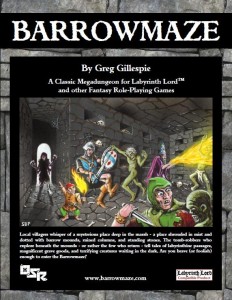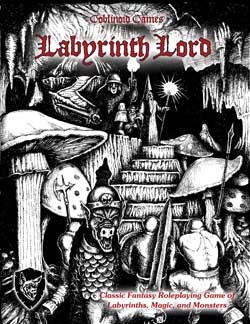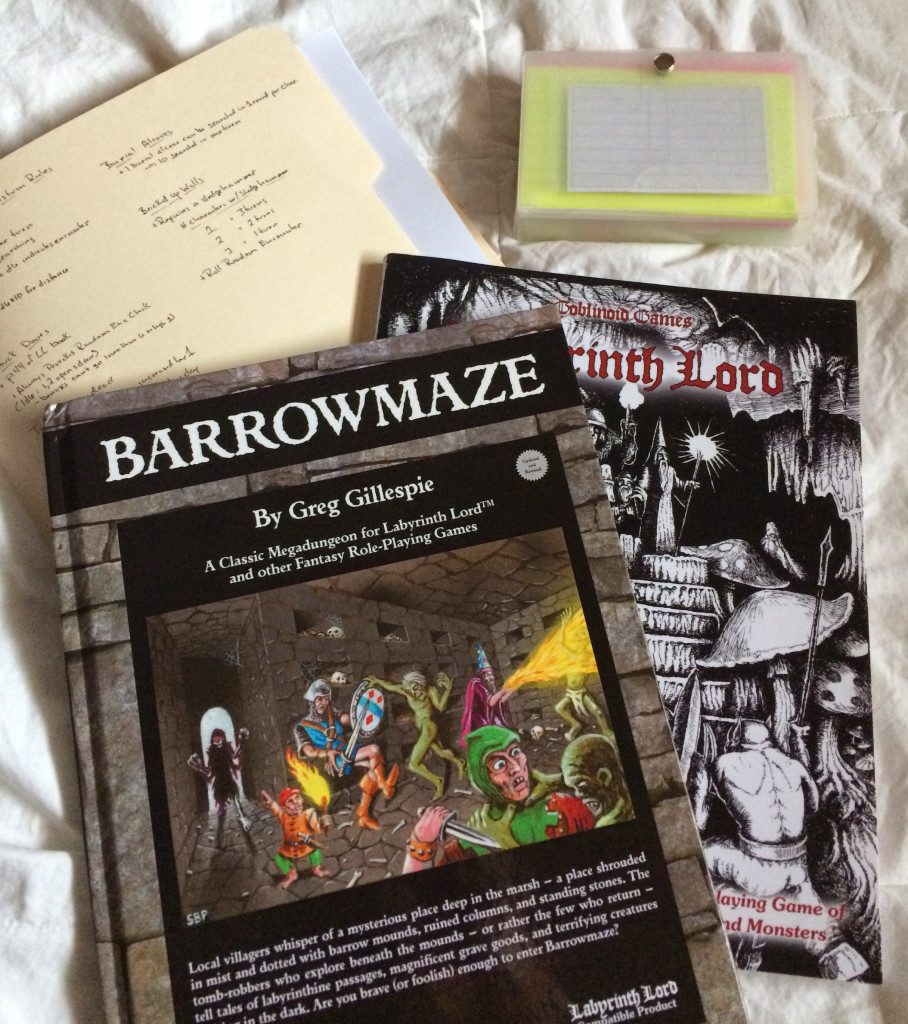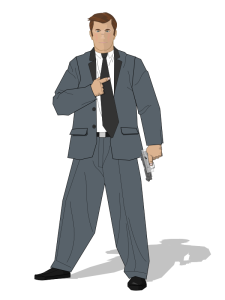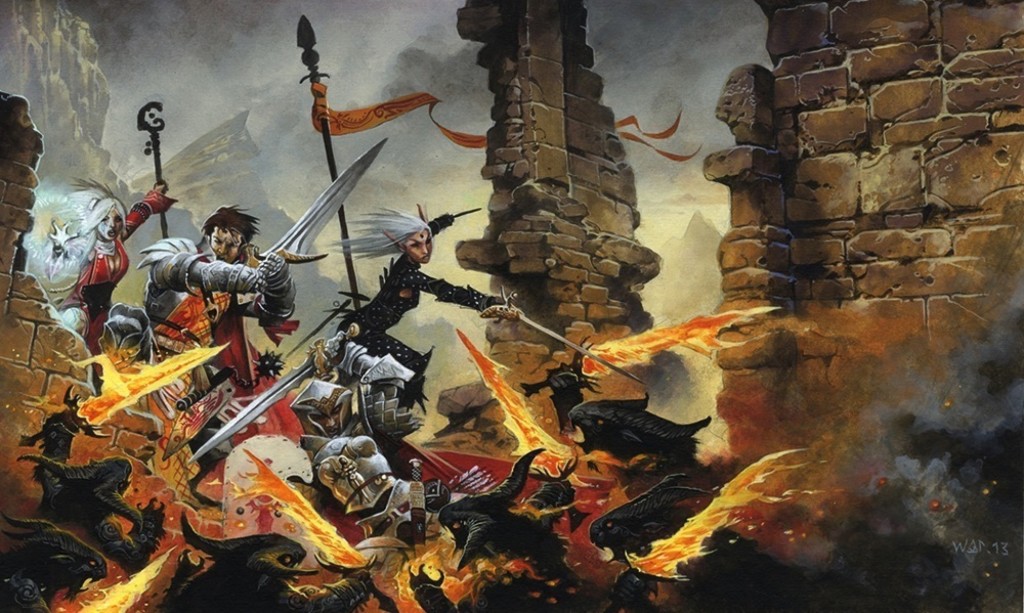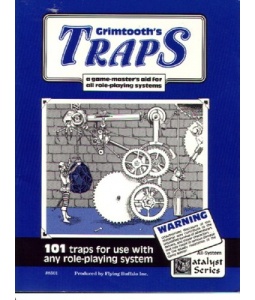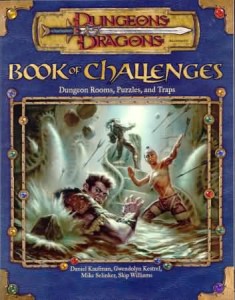 When I DM I always like to try something a little bit different. Perhaps a different take on the campaign or the way the characters are built. Some of the ideas work and others do not. I liked it when I started having the players choose the ability scores for their own character. When I tried to have the players describe their character and then have the other players choose the attributes based on the descriptions did not work out as well. I do some different things behind the screen but I don’t keep track of them as thoroughly. I see the more important aspect of the game as player interaction with the rules. It is also very possible I am finding a complex solution to problems that do not exist.
When I DM I always like to try something a little bit different. Perhaps a different take on the campaign or the way the characters are built. Some of the ideas work and others do not. I liked it when I started having the players choose the ability scores for their own character. When I tried to have the players describe their character and then have the other players choose the attributes based on the descriptions did not work out as well. I do some different things behind the screen but I don’t keep track of them as thoroughly. I see the more important aspect of the game as player interaction with the rules. It is also very possible I am finding a complex solution to problems that do not exist.
Before I go on to this idea I must stress it is not something for every group. It might not even be a good idea for my own group as this will be the first time it has been brought up to them. For it to even have a chance of working one needs a DM that has a solid understanding of the rules and system mastery. It has to have players that will not abuse the system. The players also have to trust the DM in being fair with his rulings and trust the other players that no one is abusing the system. It does not require system mastery for the players and would probably be better for players who do not have it.
The Pathfinder system stays intact. Characters still have hit points, AC, base attack bonus, saves, etc. The way we get there is going to change though. Before one picks a race, a class, feats, and spells. Depending on what they were it would govern what the numbers were and the options the player had to select from for the character. What a player would do is come up for the concept for their character. It could be as simple as Knight to something very specific like Street Rat raised by a Fire Wizard. A player could have a short concept like that or flesh it out with a few paragraphs of backstory. Then the player would work with the DM to assign all the aspects that a class normally does. It will take a little more work but I think it will get a player more involved in his character and help create a character exactly like they want. Many times in Pathfinder and other similar systems I see players make compromises because they can’t find exactly what they want.
It doesn’t end there, this is just the beginning. I would throw out the skill list and come up with player created skills. A player would just name what they want the character to be able to do again with the DM overseeing everything to make sure it comes out ok. It would help keep the number of skills down and allow for broader skills to exist like Acrobatics. That could cover climb, jump, tumble and similar skills. Or a player could have a skill called Parkour which has some similarities to acrobatics but some specific differences as well. By using the language to pick out these different skills one can add a fine nuance to the game and what the character is able to do.
Each character would get feats, but once again they don’t have to pick off the insane list of all feats in existence. Feats now can also cover things like class abilities. Weapon and armor training would be included here. A character concept of weapons master might know how to use any weapon he picks up. But a concept like Spearman would have a more limited selection of weapons known but would have greater ability and bonuses when using a spear. If the player has trouble thinking up ideas then he can peruse the books and find thousands of different examples in all the classes, archetypes, and feats that are in existence.
Spells is where we really get crazy. Like feats there are just too many spells in the game so we do the same thing and just have the player name his own spells. Or maybe the DM playing the NPC Wizard who the PC is apprenticed to creates the spell. We might have one called Fire. It can be used to create light, spark dried tinder to make a fire, be used as a fire projection like burning hands, or even an explosion like a fireball. Damage would all be minimal since the caster is only first level. But anyway the character can think to use fire the spell can potentially do. As a limit I would probably introduce a spell casting skill or have a spells per day like the standard game.
It will take more work by the players but it allows them to be creative instead of ordering off the menu so to speak. If the player does not like it or is not feeling creative enough to do it then they can use an existing class, feats, and spells. There will be differences between a character done the old way and this way but if the DM is doing his job correctly they should coexist just fine. This system is very abusable and I like that it is. I trust my players with that kind of power and it has yet to blow up in my face. I don’t feel like this is an original idea and I am sure other games approach character creation more like this.
Would a Pathfinder player actually want to do this? I don’t know. It could bethe catalogs of options is what drives players to Pathfinder. I know I might be solving a problem that doesn’t exist but something in thinking on gaming this is what happens.
What do you think, Sirs?
Chris Gath. I’ve been gaming since 1980 playing all kinds of games since then. In the past year I’ve run Pathfinder, Dungeon Crawl Classic, Paranoia, and Mini d6. My current campaign is mini d6 and we are using that for a modern supernatural conspiracy investigative game. On some forums I’m known as Crothian and I’ve written a few hundred reviews though I took a sabbatical from reviewing for a few years as it burnt me out. I was also an judge for the Gen Con awards (ENnies) six times. Jeff, the owner of this blog, is one of my players and a good friend.

